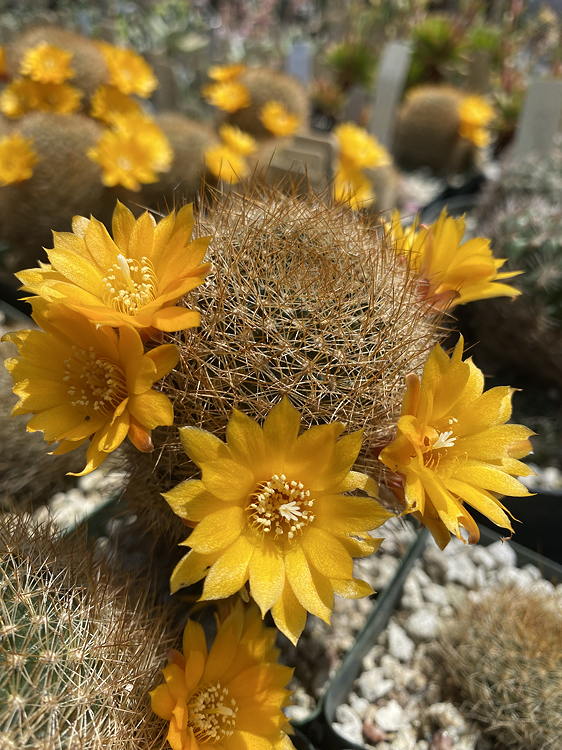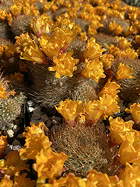Rebutia or Sulcorebutia? Controversy reigns over the proper placement of this species. We choose to follow John Pilbeam’s arguments that flowers, fruit and seed, as well as habit and geography make Sulcorebutia its logical home. This is despite its lack of thickened, napiform roots or elongated areoles which usually characterize sulcos. We have grown this species in our Desert Conservatory for many years. The plant growing there is paler spined and has proven to be one of the most satisfying and floriferous specimens, producing several flushes of its gorgeous yellow flowers during the growing season. Given the origin of the flowers some distance from the apical meristem, they emerge from the sides of the stems and create rivulets of yellow between the bristly heads of the clump that occupies a 12” dish. The clone offered here differs in having slightly stiffer, more honey-colored spination but seems to be equally floriferous. We offer rooted cuttings of HBG 135441, a plant acquired from the Atlanta BG in 1994. It is said to originate from near Tarata, Dept. Cochabamba, Bolivia. $10
Correction, published in the Cactus and Succulent Journal Vol. 97 (2), Summer 2025
According to Brian Bates, British authority of the genus Sulcorebutia, and a longtime resident of Bolivia, noted my confusion of the locality for Sulcorebutia glomeriseta with the locality for S. glomerispina, a very different plant. The plant illustrated under the correct name was said to grow near Tarata, in error. According to Brian, “It grows in Ayopaya well north of Cochabamba. All plants [cultivated up to that time] originate from the original Cardenas plants.” It was refound a few years ago by European explorers John Carr and Johann de Vries who rather cryptically stated that “It was exactly where Cardenas said.”

Published in the Cactus and Succulent Journal, Vol. 95 (2), Summer 2023

